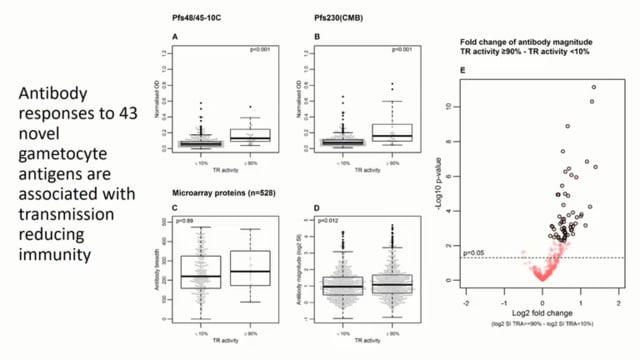Last Updated: 02/09/2025
Can malaria transmission be prevented through catastrophic failure of gametocyte quiescence?
Objectives
To understand how quiescent gametocytes regulate their energy production that will ultimately lead to identification of steps in the quiescence pathway which could be targeted by new therapeutics.
London School of Hygiene and Tropical Medicine (LSHTM), United Kingdom
Malaria propagates when Plasmodium male and female gametocytes transmit from humans to mosquitoes. Interrupting this reduces new cases of malaria and the spread of drug resistance, therefore is a recognised therapeutic priority. Gametocytes have no control over when a mosquito bites, and so become quiescent for up to 22 days to maximise their chance of transmission. Mitochondrial (MT) respiration is essential for parasites in the mosquito, however blood stage parasites favour anaerobic respiration. Gametocytes develop a large cristate mitochondrion in readiness for transmission however they divert glucose metabolism away from the mitochondrion and excrete it as acetate. The hypothesis is that strong MT activity in quiescent gametocytes will interfere with their dormant lifestyle in humans, and so gametocytes have been forced to develop novel (and potentially drug-targetable) mechanisms to tightly regulate glucose metabolism and thus prevent unwanted MT oxidative damage that would limit their lifespan. Through proteomic analysis 4 genes specifically expressed by gametocytes have been identified that replace or supplement key steps in glycolysis and parasite energy metabolism, including the enzyme putatively responsible for diverting glucose metabolism to acetate and an alternative isoform of phosphofructokinase lacking catalytic residues. Their function and essentiality will be studied through conditional gene deletion, phenotypic analysis during mosquito transmission, and activity of recombinant protein. The project will also study their effects on glucose utilisation through 13C-glucose incorporation and metabolomic analysis. Finally, to discover further regulators of the gametocyte quiescence phenotype, protein synthesis in male and female gametocytes will be tracked using metabolic labelling to compare and contrast their quiescent proteomes by mass spectroscopy. In this way, the project will identify new transmission-blocking drug targets for exploitation to ultimately aid malaria eradication.
Article: Protocols for Plasmodium gametocyte production in vitro: an integrative review and analysis
Feb 2021 — Jan 2026
$1.62M


